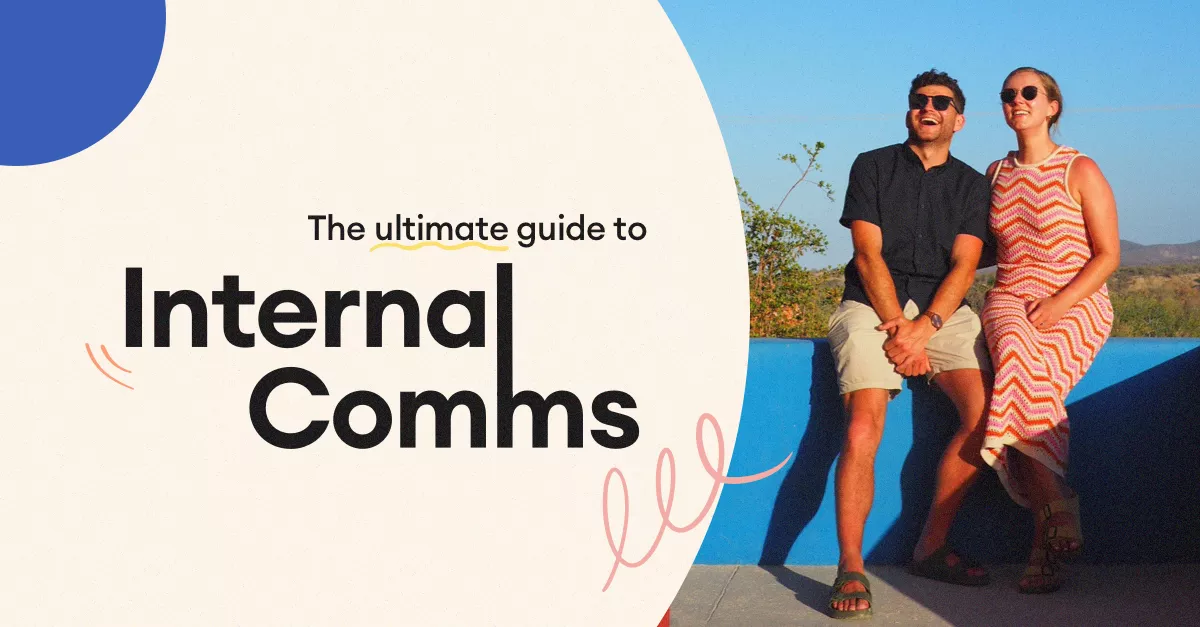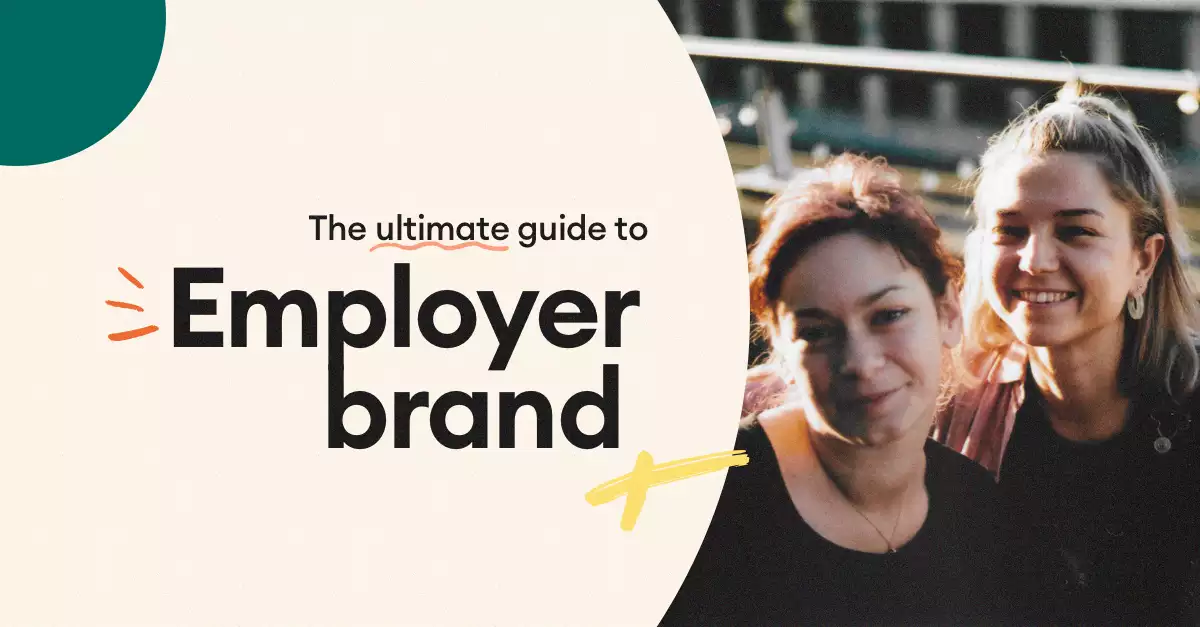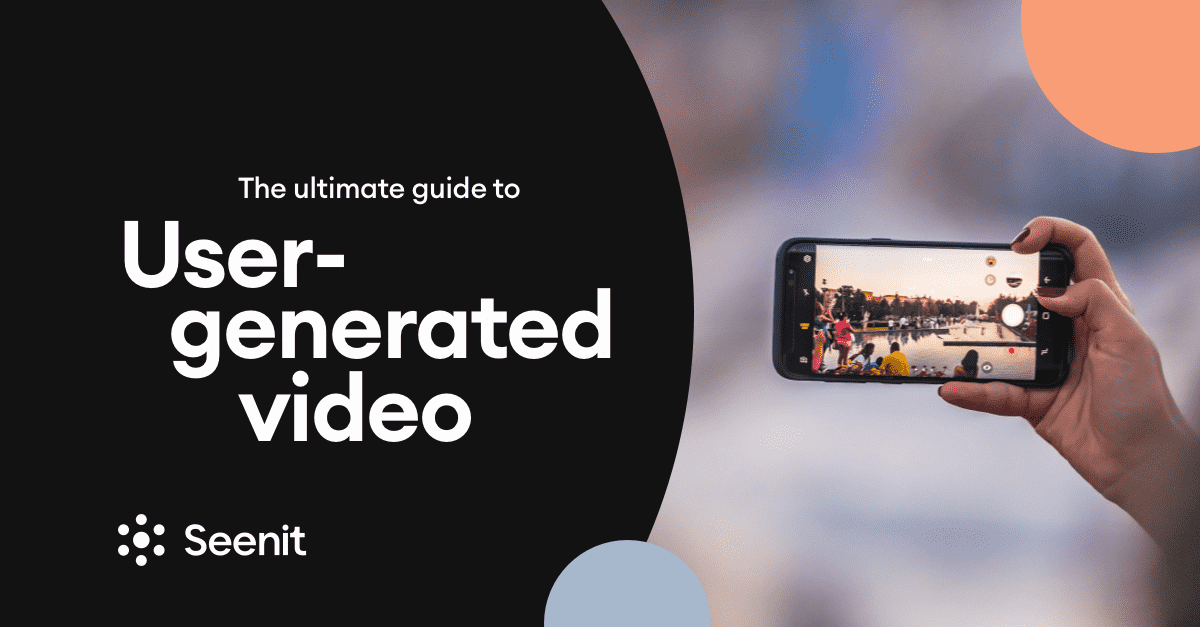We are moving into a new era. Gone are the days of digital infancy that saw us floundering through clunky social channels and pixelated videos. Today, nearly 4 billion people have access to smartphones worldwide.
Sophistication in video technology and the rapid evolution of social media platforms have shaped our world and given us the tools to connect with each other on a scale previously unimaginable. Now more than ever, we are taking advantage of these tools to tell our stories, share experiences, and have our voices heard through channels such as Snapchat, Instagram, and TikTok.
Meanwhile, the business landscape too has undergone a drastic change. Generational shifts in the workforce have led to changes in employee expectations; increased focus on employer branding and both the employee and customer experience have forced many companies to rethink how they present themselves to the world and operate internally.
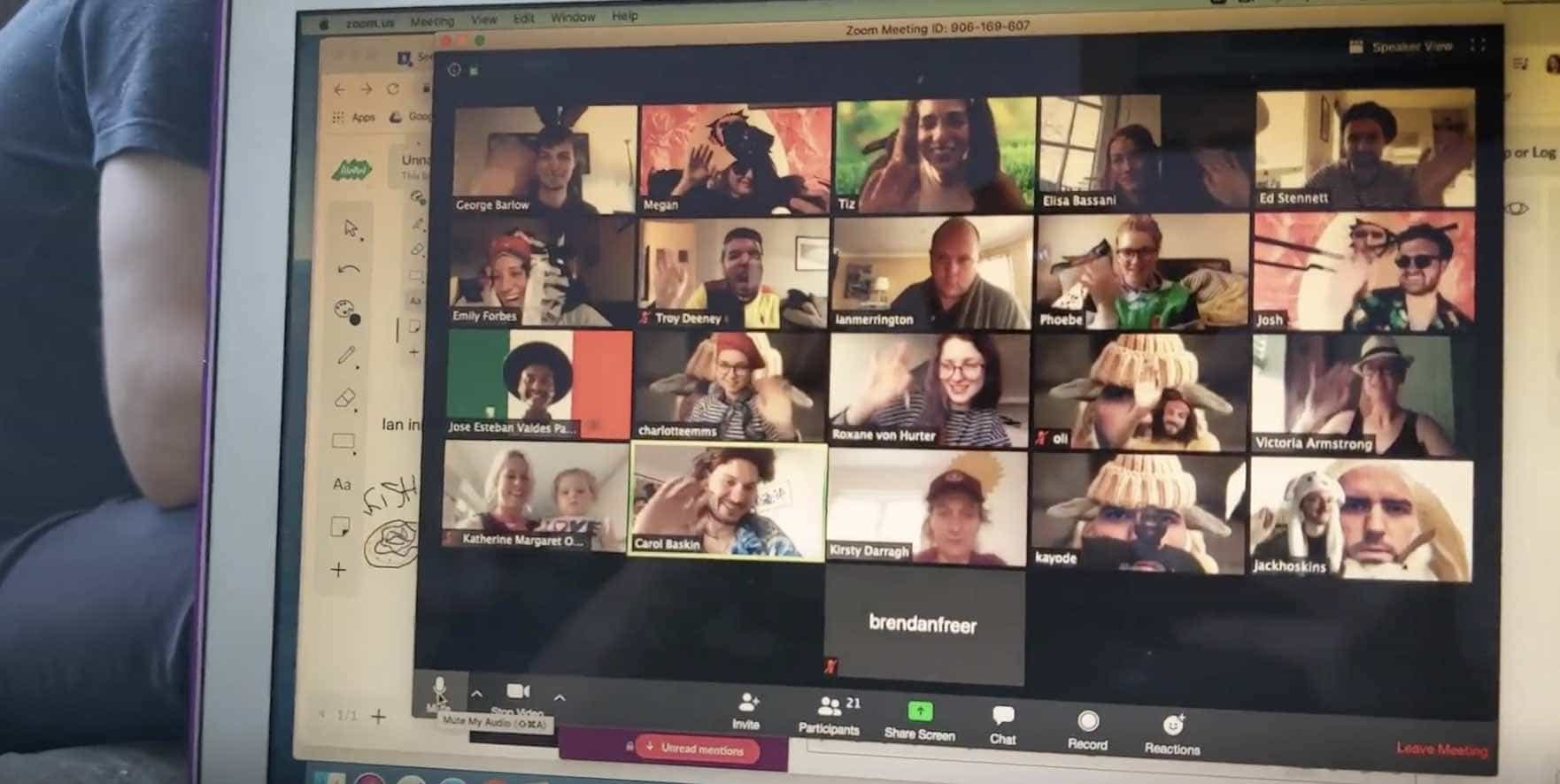
Critically, trust in businesses has been challenged by increased visibility and the amplification of employee voices via review sites and social media.
In our experience, we have found video to be the most impactful and engaging medium in communicating a message – and we aren’t alone in our thinking. In fact, according to Invisia, viewers retain 95% of a message when absorbed via video as opposed to reading. Here at Seenit, we’ve been helping organisations to tap into this avenue to champion employee voices and cultivate trust in their brands.
Why?
In organisations ranging from startups to large multinational companies, leaders have a responsibility to ensure that enough employee voices are being heard and championed within the business to help with all communications. What’s more, we know from Google data that 50% of internet users look for videos relating to a product before visiting a store. Unfortunately for most businesses, professional video is still time-consuming to produce. To turn around a high-quality video that encapsulates your message, barriers such as access locations, budgets, timelines and technologies still stand in the way. As a result, leaders are actively seeking new and innovative ways to create video content.
Enter UGV.
What is User-Generated Video?
UGV stands for User-Generated Video, a form of user generated content that is produced and shot by the user themselves as opposed to a professional production team. While UGV has been growing in popularity over the last two decades as social media and video creation software has evolved, the use of UGV in business is still relatively new.
Yet, where we may otherwise have seen a gradual shift towards UGV, 2020 and its challenges accelerated this transition considerably. Over the course of the year, we saw several pioneers paving the way in user generated content, making the most of the resources they had to bring workplace stories to life through UGV.
In a move to amplify the voices of employees and create a sense of community, HSBC produced a series of videos for their Life@HSBC channel. These videos put the people behind the company in front of the camera to share their passions, discuss their challenges and showcase their unique ways of working. Meanwhile, pharmaceutical firm Novartis led the way in giving their LGBTI employees a platform to share their experiences and help audiences to understand the challenges they have faced from their own perspective. Leading telecommunications company Vodafone set the bar high by bringing together the voices of their employees from over 25 global markets. For their #StayConntected campaign, a video collage was compiled that featured employee-generated video snippets from Vodafone employees across the world. The result was a snapshot into the working day of people throughout their globally dispersed network, fostering a sense of togetherness through one powerful UGV compilation.
What is it about Employee-Generated Video that cuts through the noise?
Today, most purchasing decisions are informed by reviews. We actively rely on the experiences of others to guide our actions. The same is true in the recruitment journey. Today, 88% of millennials see the internal culture of an organisation as a key deciding factor in choosing a job. Before accepting an offer, we search and scroll through social channels to get a feel for the employee experience and to determine how the values of the employer translate into everyday activities.
When it comes to promotional video production, professionally shot videos are 4 times more engaging than traditional forms of media like blogs or email. That’s all well and good – but in an era characterised by a need and lack therein of trust in business, an incredibly well-produced video won’t quite hit the mark like a user generated video. It’s hardly surprising, then, to discover that UGV is up to 3 times more engaging today than professional video.
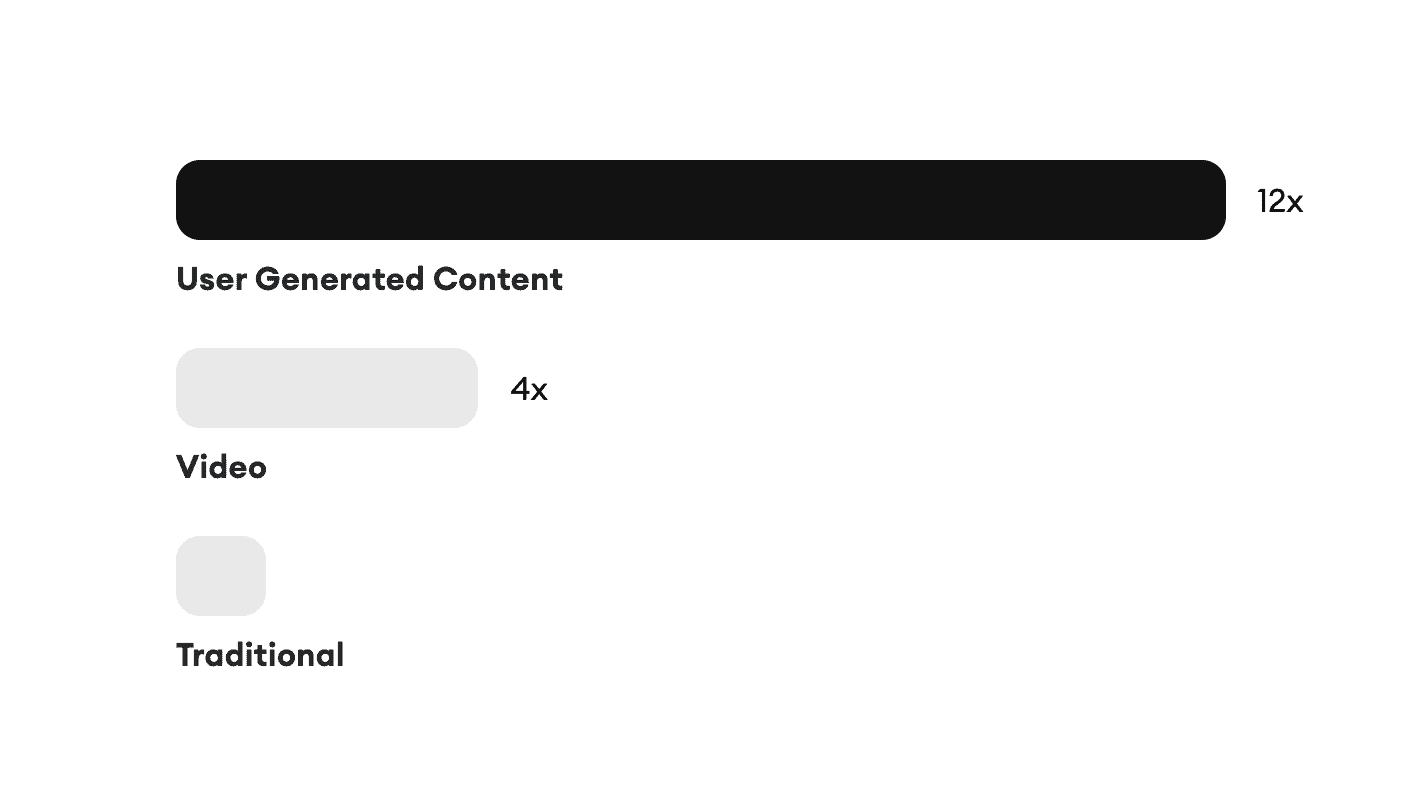
UGV is uniquely able to capture moments that a professional crew never could.
Be it an industry event or an experience around a movement that transcends one specific location, – no matter the resource available. It is the authenticity achieved through UGV that is unparalleled; this kind of content comes not from the mouths of the marketing agency, a spokesperson, or influencer, but from the minds of the people who matter the most: your community.
The best storytelling is achieved by getting as close to the source material as possible.
This in mind, UGV couldn’t get any closer – it empowers real people to speak on a topic that means something to them. It amplifies the voices of the people who are living and breathing a situation. By giving them the tools to talk about a subject that they care about, you build that all-important trust that is impossible to achieve through scripted, professionally produced content. In doing so, UGV opens up larger businesses to an immensely powerful global community that they can start leveraging to drive their communications.
**But what is the secret creating user-generated video content successfully? **
The answer to what makes a powerful piece of UGV starts with your community and their unique personalities. It’s the authenticity that shines through when the camera is pointed at people who haven’t been rehearsing lines but are speaking from the heart. The next essential element in great UGV is technology. Fortunately, most people are already equipped with the technology to film themselves within their phones. However, it doesn’t hurt to provide your people with a smidgeon of training and guidance on techniques to ensure consistency in quality. Thirdly, successful UGV requires strong storytelling. Impactful content is born when a myriad of voices are woven together to build one overarching story that gets to the heart of a theme. Take inspiration from the increasing number of UGV campaigns that companies are putting out there, and check out our ideas hub for interactive guides to steer you in the right direction.
**UGV Use Cases: Making The Most of Employee-Generated Video **
Transparency has never been more critical in the success of a brand. Corporate social responsibility has skyrocketed in the priorities of leaders; community-focused brands continue to outperform their less authentic competitors and most understand the vital importance of building inclusive environments and elevating the voices of employees from minority groups in ensuring diversity in the workplace.
During this period of cultural evolution, video has emerged as the most powerful tool in achieving these socially conscious goals. Now more than ever, brands are experimenting with user generated content and video crowdsourcing to tell their stories in a way that is genuine, honest, and relatable.
At the same time, video content has never been easier to create. Point, tap and start recording on the device you keep in your pocket - it really is that simple. Finally, brands are learning that both internal and external communications can benefit from employee-generated video to reinforce their values and connect colleagues, customers, and wider audiences into one holistic brand experience. Below, we explore the different applications for UGV in business.
Corporate comms
Today, both internal and external stakeholders seek the same thing from brands: trust.
Above all, they seek reassurance that the company they are buying from or working with is human at its core, that it cares for the people it employs and values the people it serves. At Seenit, we challenge the notion that internal and external content should be kept separate.
On the contrary, we have seen a host of great examples of companies cherry-picking the best of the videos created by employees themselves and sharing it with wider audiences, particularly on social media. Immediately, this use of UGV shows the world the soul behind the brand as opposed to a shiny marketing message or statement from the CEO.
According to the latest Edelman Trust Barometer, people are three times more likely to trust an employee than a CEO.
Brands who acknowledge this will find success from creating bottom up communications strategies that champion employee voices and give external audiences a glimpse behind the curtain at the personalities driving the business.
When it comes to internal comms, it’s clear that the old ways aren’t working: employees - particularly those of younger generations - don’t respond well to hierarchical structures and top-down comms. Humanising the leadership team via internal communication video content can help to promote transparency, build trust and foster a sense of camaraderie that is vital in removing the boundaries that have historically sat between leadership and the wider workforce.
Employee engagement
In large organisations where teams are dispersed across the world, leaders are faced with the challenge of unifying their people through powerful brand experiences that keep them engaged. In their efforts, many have found video and UGV specifically to be highly effective for living company values remotely.
Whether it’s setting fun TikTok-style challenges for staff - like this rapping broker in a Freedom Mortgage video - or holding competitions amongst your workforce, UGV creates an opportunity to motivate your employees and get them energised about your brand. Share these videos externally and future talent along with prospective customers will undoubtedly take notice.
**Overall, companies with high employee engagement are 21% more profitable. **
UGV is a powerful tool in keeping your employees engaged with your brand, no matter where they are located in the world. It doesn’t have to be complicated to be effective, either. For example, at Seenit, we use our video collaboration software to lace together whimsical birthday wishes for team members to celebrate their special day. In an era characterised by remote working, this is a simple but highly impactful means of making sure everyone feels valued.
Marketing
In the world of marketing and advertising, a distinct shift has taken place in the last decade. Where previously, air-briushed Big Macs and meaningless perfume ads ruled the roost, a new era is upon us. Now more than ever, customers seek trust and transparency and the effects of the Coronavirus pandemic have only heightened this.
More and more, UGV is becoming the vehicle of choice for bringing authenticity back to marketing campaigns. Instead of We The Brand and You The Customers, the winners of this era will be those that bring audiences in to the values that companies are built on.
In a recent survey, 62% of marketing professionals said they have changed their marketing strategy as a direct result of the Covid-19 crisis.
With large-scale video production off the table, marketing teams across the world saw an opportunity to leverage user generated video in creating campaigns centred around authenticity. Tesco switched from their professionally-shot ads to UGV of people cooking for loved ones they missed during lockdown, and got their audience involved by asking members of their community to post recipes on Twitter with the hashtag #foodlovestories. Meanwhile, their competitors at the Co Op rolled out an ad featuring videos shot by staff from their smartphones, warts and all - the human touch of the awkward moments and tech failures sparked a sense of community spirit.
In marketing, UGV is here to stay. Whether as a standalone format or when combined with professionally-shot video, the power of UGV in showcasing personal stories and humanising a brand beyond its product is undeniable.
D&I
Collaboration and knowledge sharing is key to achieving diversity and inclusion. No longer can organisations afford to treat diversity as a buzzword or a tick-box exercise. Instead, leaders must fix the spotlight on the people who matter; they have a responsibility to create avenues for which employee voices from all backgrounds and beliefs can be heard. UGV is proving exceptionally powerful in achieving this.
There’s no need for elaborate scripts or big budgets, either. For example, in celebration of Black History Month, make an active effort to champion your employees by giving them a platform to tell their story and share it with your organisation. The same is true of LGBT history month, which presents the workforce with an opportunity to educate themselves about the challenges faced by the LGBT community. If they’re willing to speak on the subject, invite your LGBT staff to use UGV to share their experiences with the wider team.
In 2019, 61% of workers have witnessed or experienced workplace discrimination.
We shouldn’t be shying away from the truth - we should be actively working to change the behaviours that are damaging to our organisations and wider societies. No company has a perfect culture, but they can improve by listening to their employees. If participants are given a platform to openly speak about their experiences, good and bad, it demonstrates that a company is accepting of the fact that inclusion isn’t a one and done but an ongoing journey.
Creating compelling employee-led video content that tells your story authentically and reflects your values honestly will help drive your Diversity & Inclusion much more than a social media post could ever. Of course, this isn’t a one and done exercise. Achieving the goal of inclusive culture is only possible when an organisation makes a consistent effort to champion its diverse workforce every single day, not solely during a national day, week or month of celebration.
Recruitment
Your hiring process underpins your success as a business. People are your greatest asset. So, the more talent you can bring to your team, the better placed you are to drive growth. In the modern business landscape, candidates don’t judge a book - or rather, a business - by it’s cover - they make decisions based on what they know about the organisational culture of the company seeking to hire them.
For employers committed to building a pool of high potential talent, video is critical. UGV brings a job description to life; it provides that all important visibility and reassurance that can determine whether or not a candidate accepts an offer.
No one knows what to expect from a list of requirements and expectations. On that note, no one is better placed to demonstrate what the role will entail than the person currently doing it. Provide this video to prospective candidates and you immediately put them at ease: the job they’re accepting isn’t a big unknown but a tangible challenge that feels familiar thanks to UGV.
Did you know that job posts get up to 35% more applications if accompanied by a recruiting video?
Of course, the hiring process doesn’t end at an offer acceptance and a start date. It extends beyond here into the onboarding process - a process that has been under strain since teams have been working remotely. For large companies, tackling the feeling of loneliness that new hires face when working from home is once again facilitated through employee-generated video. A good example of this could be to ask your new recruits to document their first week through a video diary.
For companies fortunate enough to be hiring aggressively during the pandemic, these video diaries can make all the difference in creating a sense of community and sharing knowledge, tips, and advice amongst the workforce.
Employer Branding
In the digital age, employers can’t hide behind marketing messages. Reputations are everything, and slick corporate-style videos won’t cut it in communicating your values to wider audiences. They want to hear from employees themselves that their experiences are positive and the culture is progressive; they crave authentic communications, campaigns that don’t feel forced and proof that the culture they may enter is welcoming, passionate, and true to their word.
What better way to achieve this than with employee-generated video?
Companies with strong employer brands see 50% more qualified applicants and take 1–2x faster to hire.
A ‘day in the life’ video that is shot on the move by the people ‘on the ground’ can make all the difference in shining the spotlight on your internal culture. Equally, leveraging the voices of loyal employees who remain engaged with the company and passionate about their work will be a powerful endorsement for your employer brand.
While you can opt for the scripted approach, giving your employees a loose brief and letting them run with it to create unique UGV brings out the quirks, humour and personalities that make your organisational culture what it is.
Blending employer branding and internal communications has many advantages - for one, if employees are involved in the process of making videos, they are much more likely to share the content on social media with their own networks. The further your UGV content travels in the digital space, the more your reputation grows, enabling you to attract the best calibre talent in your industry.
Events
Prior to the pandemic, industry events were nearly always followed up by wrap ups that received underwhelming levels of interaction. Why? In many cases, the problem was inauthenticity - after all, a few clips of speeches and crowds of people networking set to generic stock audio doesn’t necessarily communicate the tangible value of an event. Instead, we have found UGV to be the most powerful tool for engagement in post-event follow-ups.
Eventbrite research shows that 94% of event creators who use video say it’s effective.
In a post-pandemic world, brands investing in events can get more from their marketing by getting their employees involved in the production of videos shot from their own perspective.
The result is a documentary-style video that draws in the viewer, enticing them to attend future events by giving them an authentic showcase of the day itself. You could even ask speakers, colleagues, and delegates to film themselves in the run up to the event; use UGV to make announcements about the line up or film colleagues providing an FAQ or a POV video of how to get there. The possibilities for UGV in events are endless!
Of course, with many events now virtual, beating the ‘Zoom fatigue’ poses another challenge altogether. Keeping your colleagues and employees connected requires some outside-of-the-box thinking. In this virtual environment, storytelling becomes an even more valuable tool to marketing events, and it’s UGV that trumps all mediums for bringing out the human connection that your audience craves.
Testimonials and Reviews
From picking which takeaway to order from to choosing a new cake tin, the consumer review has become vital for shoppers evaluating purchase decisions. And that’s showing no signs of slowing down. With companies like ASOS recently adding the ability to leave product reviews, it’s clear that the humble review is here to stay.
In fact, Juniper Research suggests that 77% of people read reviews before they make an online purchase. And it’s not just reviews, either - customer testimonials have the highest effectiveness rating for content marketing at 89%, according to Social Fresh.
So how does this relate to UGV?
Today’s consumer is savvy. They are happy to put in hours of research so that they feel more comfortable in their decision, and video can provide them with that sense of comfort. Where a written review could be fake, a video feels real. Getting an honest opinion from someone who is just like them provides a sense of reassurance and security in their purchase.
People trust people.
They want to see people like them talk honestly about a product or service. The good, the bad, and the ugly. A piece of genuine, user-generated video content is more trustworthy than a series of glowing 5 star reviews.
Where you can’t control YouTube videos that are created about your product or service, you can own the narrative proactively through UGV, creating your own testimonial and review videos. We’ve seen companies like Moshi do this to great effect recently.
If we know that consumers are going to put the time in to research your product, we can use UGV to our advantage and create content that will help them with their research. By crowdsourcing video from ‘the average joe’, you can create meaningful, relatable, and trustworthy content that will give your consumers a sense of comfort before making their decision.
UGV: The Best Kind of User Generated Content
Any marketing professional worth their salt will tell you that user-generated content is gold dust. We couldn’t agree more. Increasingly, collaborative video is emerging as the medium of choice for brands seeking to boost engagement with employees, candidates, and customers alike.
At Seenit, we’re proud to have built a collaborative video platform that makes the creation of user generated content simple, affordable, and effective for brands ranging in size and sector.
The content that we co-create consistently drives double the engagement than traditional video production - and that’s no accident.
Not only is it more likely to engage an audience, it’s a way of bringing to life your organisational culture and putting the people who make your business centre stage. User generated video helps you to showcase your employees and their personal stories; it’s an interactive means to help elevate their voices, hear their challenges, and drive inclusivity at all levels of your business.
Not only that, but our platform is continuing to bring cost-savings to clients at a time where budgets are tighter than ever. Recently, we had the opportunity to work with a global financial institution to produce collaborative video through the Seenit platform. The result was a 70% reduction in costs, and the customer was able to increase their video output by nine times. They aren’t the only ones.
For one Manufacturing customer, we helped to reduce the cost per video £1 - that’s eight times less than their previous costs with video agencies.
From a marketing perspective, UGV is here to stay.
In the wake of the Covid-19 pandemic, more and more companies are rightfully using their people to tell real stories. This is leading to a content marketing revolution - one driven by authenticity and built on trust. Through UGV, customers feel more connected than ever. We at Seenit are proud to be leading the charge in this cultural shift. Through our platform, we’re helping companies to get the best out of Employee-Generated Video and changing the way they tell stories forever.

